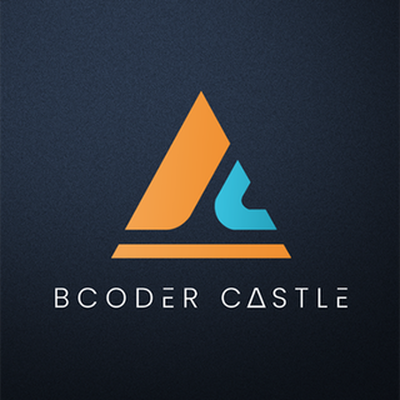Tech Stack for E-Learning App Development: Key Components and Considerations
Body
In recent years, the landscape of education has undergone a significant transformation with the rapid rise of e-learning platforms. E-learning app Development has revolutionized the way we learn, offering flexible, accessible, and personalized education experiences. Behind the scenes, a robust and well-chosen tech stack plays a pivotal role in ensuring the seamless functioning of these platforms. In this blog post, we will delve into the key components and considerations for building an effective tech stack for e-learning app development.
Understanding the E-Learning App Development
Before diving into the tech stack, it's essential to grasp the multifaceted nature of e-learning apps. These platforms cater to various user types, such as students, instructors, administrators, and even parents. Additionally, they offer diverse content formats, including text, videos, quizzes, assessments, interactive simulations, and more. Therefore, a comprehensive tech stack needs to address the complex needs of these stakeholders and accommodate diverse content types.
Backend Development
The backend of an e-learning app serves as the foundation upon which the entire platform stands. Here are some key components to consider:
1. Server
Choosing the right server technology is crucial for scalability, performance, and security. Technologies like Node.js, Ruby on Rails, Django, and Java Spring Boot are popular choices due to their scalability and real-time capabilities.
2. Database
The choice of a database system depends on the app's data structure and requirements. Relational databases (e.g., MySQL, PostgreSQL) are suitable for structured data, while NoSQL databases (e.g., MongoDB, Cassandra) are more flexible for handling various types of data.
3. APIs
APIs (Application Programming Interfaces) enable seamless communication between different components of the app. A well-designed API architecture allows for easy integration of third-party services and ensures smooth data flow.
4. Authentication and Security
Security is paramount in e-learning platforms, as they handle sensitive user information. Implementing robust authentication methods such as OAuth or JWT (JSON Web Tokens) is essential, along with encryption for data protection.
Frontend Development
The front end is the user's gateway to the e-learning experience. A user-friendly and responsive front end enhances engagement and satisfaction.
1. Web Frameworks
Frameworks like React, Angular, and Vue.js offer tools for building interactive user interfaces. Their component-based architecture simplifies development and maintenance.
2. User Interface (UI) Design
Intuitive and aesthetically pleasing UI/UX design is critical for user engagement. Consider using design systems like Material UI or Bootstrap to maintain consistency and speed up development.
3. Responsive Design
Given the diverse devices users might use to access the app, responsive design ensures that the app functions seamlessly on different screen sizes and orientations.
Content Management System (CMS)
E-learning app Development deal with a vast amount of content, from course materials to assessments. An efficient CMS streamlines content creation, organization, and delivery.
1. Content Creation Tools
Integrate tools that allow instructors to create and upload content effortlessly. Rich text editors, video uploaders, and assessment creators are essential components.
2. Content Organization
Implement a structured system for categorizing and tagging content. This helps users find relevant materials quickly, enhancing their learning experience.
Live classes, video lectures, and interactive webinars are integral to many e-learning platforms. Integrating reliable video streaming and conferencing technology is essential.
1. Video Hosting
Using dedicated video hosting services or Content Delivery Networks (CDNs) ensures smooth video playback without buffering issues.
2. Real-time Interactions
For interactive sessions, integrate real-time communication tools such as WebRTC to enable features like live chat, virtual whiteboards, and Q&A sessions.
Analytics and Reporting
To monitor user engagement, track progress, and identify areas for improvement, robust analytics, and reporting tools are necessary.
1. User Analytics
Implement tools like Google Analytics or Mixpanel to track user behavior, such as page views, session duration, and click-through rates.
2. Learning Analytics
For educators, offering insights into students' performance, engagement, and learning patterns is crucial. Learning analytics dashboards can provide this information.
Considerations for Tech Stack Selection
When selecting the components for your e-learning app's tech stack, keep these considerations in mind:
1. Scalability
Ensure that the chosen technologies can accommodate growing user numbers and increasing content without compromising performance.
2. Flexibility
Choose a tech stack that allows for easy integration of third-party tools, as well as adaptability to future technologies and trends.
3. Security
Prioritize data security and user privacy. Implement encryption, secure authentication methods, and regular security audits.
4. User Experience
Place a strong emphasis on UI/UX design and responsive development to create a seamless and enjoyable learning experience.
5. Maintenance and Support
Opt for technologies with an active developer community, regular updates, and available support channels.
In conclusion, carefully considering the tech stack that runs e-learning software is essential to its success. Incorporating the expertise of a reputable e-learning app development company can greatly contribute to ensuring smooth operation and a seamlessly functioning platform. A carefully chosen stack not only fosters smooth operation but also enhances user engagement, content delivery, and security. Developers, collaborating with an e-learning app development company, can design a comprehensive e-learning platform that empowers both students and educators. This collaboration involves gaining a thorough understanding of various user needs, content types, and interactions to create an optimal educational experience.










Comments